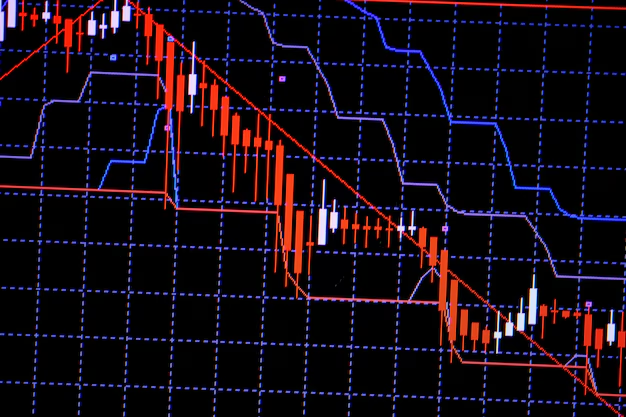Understanding Stock Volatility: A Comprehensive Guide
When navigating the financial markets, one term that frequently pops up is "volatility." But what exactly does it mean when we say a stock is volatile, and how can you effectively describe its volatility? Whether you're an experienced investor or a curious beginner, understanding stock volatility is pivotal for making informed investment decisions. This guide delves deep into the concept, providing insights into what drives volatility, how to measure it, and why it matters to your investment strategy.
📈 What Is Stock Volatility?
Volatility refers to the degree of variation in a stock's trading price over a certain period. In simpler terms, it's a measure of how much a stock's price fluctuates. Stocks with high volatility experience sharp price movements in a short time frame, whereas low-volatility stocks showcase more stable and predictable price trends.
Key Characteristics of Volatility
- Magnitude of Change: How drastically prices rise or fall.
- Frequency of Change: How often these changes occur over a given period.
- Historical Patterns: Past price fluctuation behaviors that may hint at future trends.
A volatile stock might feel like a roller coaster ride, with prices soaring one day and plummeting the next. This can be attributed to various factors such as investor sentiment, market conditions, and specific events impacting the company or industry.
📊 Measuring Volatility
Understanding how to measure stock volatility is crucial for investors aiming to assess risk or identify investment opportunities.
Common Metrics
Standard Deviation: This statistical measure quantifies a stock's price dispersion from its average price. A higher standard deviation indicates greater volatility.
Beta: This metric compares a stock's volatility against the broader market. A beta greater than one suggests the stock is more volatile than the market, while a beta less than one indicates less volatility.
Average True Range (ATR): It captures the average range of price movement over a defined period, giving insights into market sentiment and investors' behavior.
Volatility Indexes (VIX): Often dubbed the "fear index," the VIX measures market expectation of near-term volatility, primarily for indices like the S&P 500.
How to Use These Metrics
For investors, it's not just about understanding these metrics but applying them to make informed decisions. For example:
- Risk Assessment: Determine if a stock's volatility aligns with your risk tolerance.
- Portfolio Diversification: Balance high-volatility stocks with more stable investments to manage risk effectively.
🔍 Factors Influencing Stock Volatility
Numerous factors can sway a stock’s price, making volatility a dynamic and sometimes unpredictable trait. Here are some notable influences:
Internal Factors
- Earnings Reports: Positive or negative earnings announcements can significantly impact stock prices.
- Leadership Changes: New executive appointments or resignations can alter investor perceptions and stock volatility.
- Product Launches: Even announcements about new product developments can create price swings.
External Factors
- Economic Indicators: Interest rates, inflation, and unemployment rates often influence market conditions and stock volatility.
- Geopolitical Events: Political unrest, trade tensions, or policy changes can lead to market instability, affecting stock prices.
- Market Sentiment: Investor behavior, driven by emotions like fear and greed, often results in increased volatility.
Example: Tech Stocks
Technology stocks are typically known for higher volatility due to rapid innovation cycles and dependency on regulatory environments. A new regulatory policy might cause sudden upward or downward movements in their stock prices.
🧠 Implications for Investors
Understanding stock volatility is not just about measuring price changes; it's about knowing how these changes affect your financial strategy.
Crafting Your Investment Strategy
- For Risk-Averse Investors: Focus on low-volatility stocks, which often belong to more established companies with consistent performance.
- For Risk-Tolerant Investors: High-volatility stocks might be attractive for short-term gains but come with increased risk.
Timing the Market
While it’s virtually impossible to perfectly time the market, knowing volatility trends can aid in identifying when to enter or exit positions.
- Buy Low, Sell High: Aim to purchase stocks when volatility leads to undervaluation and sell during overvaluation phases.
- Dollar-Cost Averaging: This strategy involves regular investments regardless of price, minimizing the impact of volatility over time.
📌 Visually Distinct Summary Section
Here's how you can leverage stock volatility to your advantage:
- 📊 Assess Risk: Use metrics like standard deviation and beta to understand volatility levels.
- 🛡️ Diversify Portfolios: Balance volatile stocks with stable investments.
- 📝 Stay Informed: Monitor economic and geopolitical developments.
- 🚀 Consider Timing: Use volatility for potential opportunistic buys or sells, applying strategies like dollar-cost averaging to alleviate market timing pressure.
🌟 Practical Tips for Monitoring Volatility
Monitoring stock volatility requires a blend of vigilance, analytical insight, and practical strategy:
Monitoring Tools
- Financial News Platforms: Stay updated with the latest market news and events.
- Stock Market Apps: Many provide real-time volatility measures and alerts.
- Analyst Reports: Understand expert opinions on stock performance and potential market trends.
Strategic Adjustments
- Regular Portfolio Reviews: Adjust your holdings in response to persistent volatility.
- Set Stop-Loss Orders: Protect your investments by employing these pre-determined exit points.
🤔 What Does Volatility Mean for You?
Stock volatility is often viewed as a double-edged sword in financial markets. While it presents potential for high returns, it also poses risks that require careful consideration and strategic planning.
By understanding and adequately describing stock volatility, investors can tailor their approach to align with their financial goals, risk appetite, and market conditions. This holistic insight empowers investors to navigate the complex landscape of stock markets with confidence and strategic foresight.
In summary, by integrating knowledge of volatility into your investment strategy, you can make informed decisions that reflect both your ambition and financial prudence, turning potential market turbulence into a well-managed element of your investment journey.
